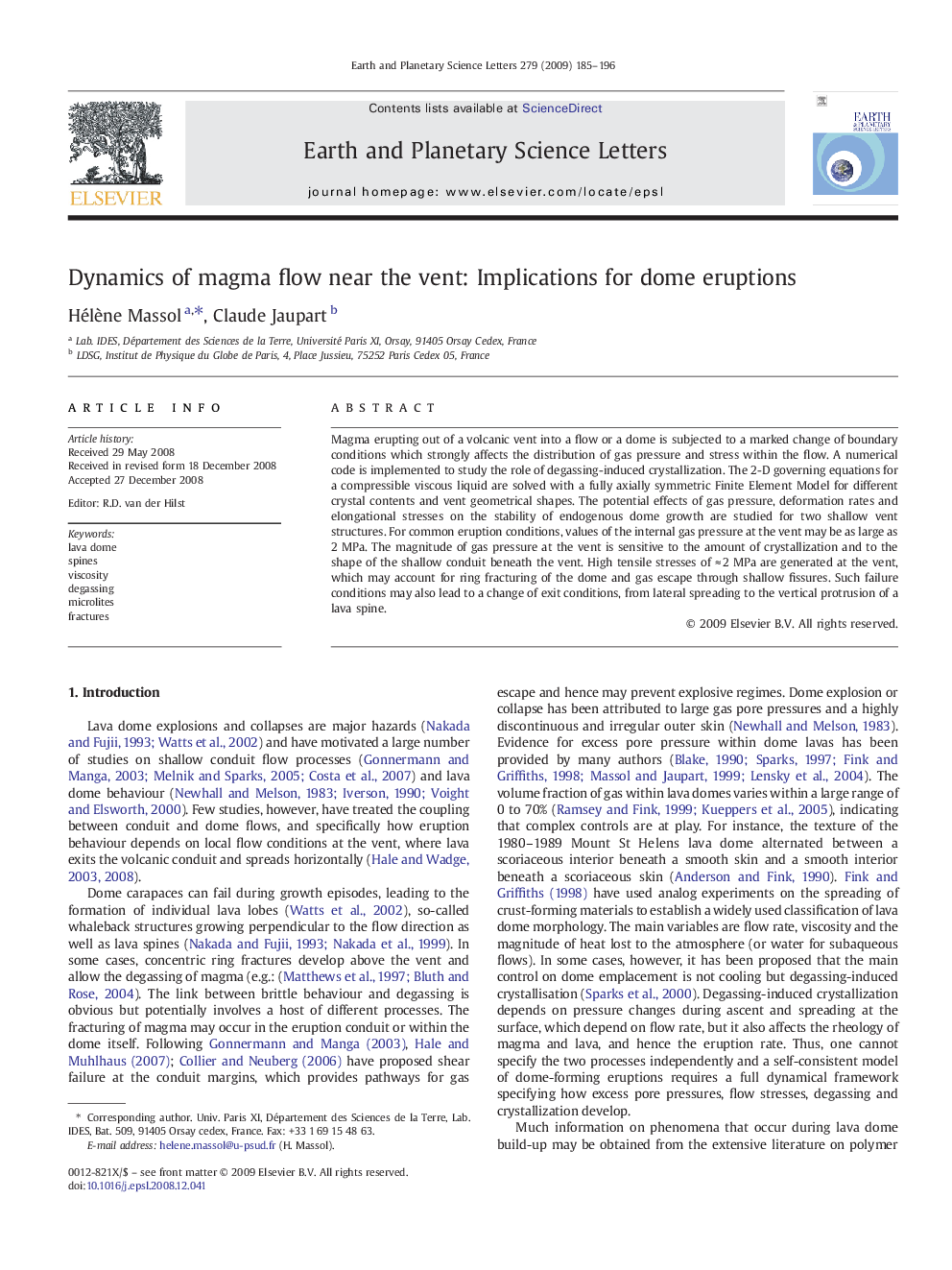| Article ID | Journal | Published Year | Pages | File Type |
|---|---|---|---|---|
| 4679273 | Earth and Planetary Science Letters | 2009 | 12 Pages |
Magma erupting out of a volcanic vent into a flow or a dome is subjected to a marked change of boundary conditions which strongly affects the distribution of gas pressure and stress within the flow. A numerical code is implemented to study the role of degassing-induced crystallization. The 2-D governing equations for a compressible viscous liquid are solved with a fully axially symmetric Finite Element Model for different crystal contents and vent geometrical shapes. The potential effects of gas pressure, deformation rates and elongational stresses on the stability of endogenous dome growth are studied for two shallow vent structures. For common eruption conditions, values of the internal gas pressure at the vent may be as large as 2 MPa. The magnitude of gas pressure at the vent is sensitive to the amount of crystallization and to the shape of the shallow conduit beneath the vent. High tensile stresses of ≈ 2 MPa are generated at the vent, which may account for ring fracturing of the dome and gas escape through shallow fissures. Such failure conditions may also lead to a change of exit conditions, from lateral spreading to the vertical protrusion of a lava spine.
